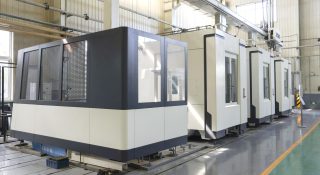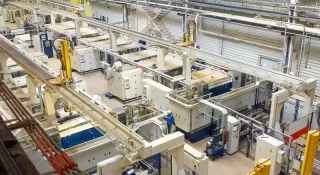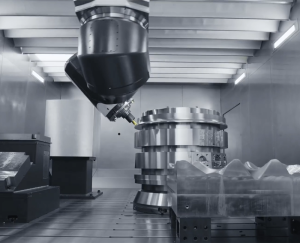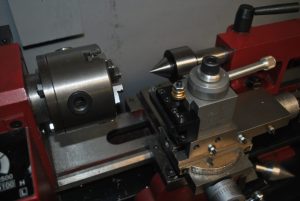Milling tools are essential in milling machine operations. There are many types of milling tools, and selecting the right ones for production can be daunting. This article will introduce the different types of milling tools and provide guidance on how to choose the appropriate ones for machining.
What is Milling Tools?
Milling tools are rotating tools used in milling machines to cut away excess material from the workpiece. These tools are designed in various shapes to meet the machining needs of different products.
Types of Milling Tools
There are numerous types of milling tools, categorized based on the method of machining:
Rough Machining
- Face Mill
The face mill is a type of milling cutter that features cutting edges only on its side. It is suitable for flat surface machining.
- Side Milling Cutter
The side milling cutter has cutting teeth located on the side and periphery, commonly used for slotting.
- Slab Milling Tool
The periphery of a Slab Milling Tool features straight or helical blades, suitable for machining flat surfaces.
- Concave Cutter
The concave Cutter is often designed in geometric shapes and is used for milling semi-circular or concave contours.
- Convex Cutter
The convex Cutter comes in disc and spherical shapes, used for milling semi-circular or smaller convex contours.
- Fly Cutter
The cutting edge of a fly cutter is typically straight, allowing it to create wide and shallow cuts on the workpiece, commonly used for surfacing operations.
Finish Machining
- End Mill
The side and end of an end mill have cutting edges, allowing for both axial and transverse material cutting.
- Ball Cutter
The cutting end of a ball end mill is semi-spherical and is used for machining spherical contours or curves.
- Hobbing Cutter
The hob cutter features spiral cutting teeth used for cutting gear teeth on a workpiece, and it’s even capable of cutting splines and sprocket teeth.
- Woodruff Milling Cutter
The Woodruff cutter has cutting teeth on the periphery of its disk, connected to a straight shank, used for cutting keyways on shafts.
Choose Right Milling Tools Considerations
Based on Milling Operations
There are various milling operations, and different types of milling cutters are used for different tasks. Here are a few examples.
- End Milling
End milling is used for horizontal surface cutting and peripheral cutting of the workpiece. This type of milling is generally employed for shaping contours and grooves, and often requires a specialized end mill for the job.
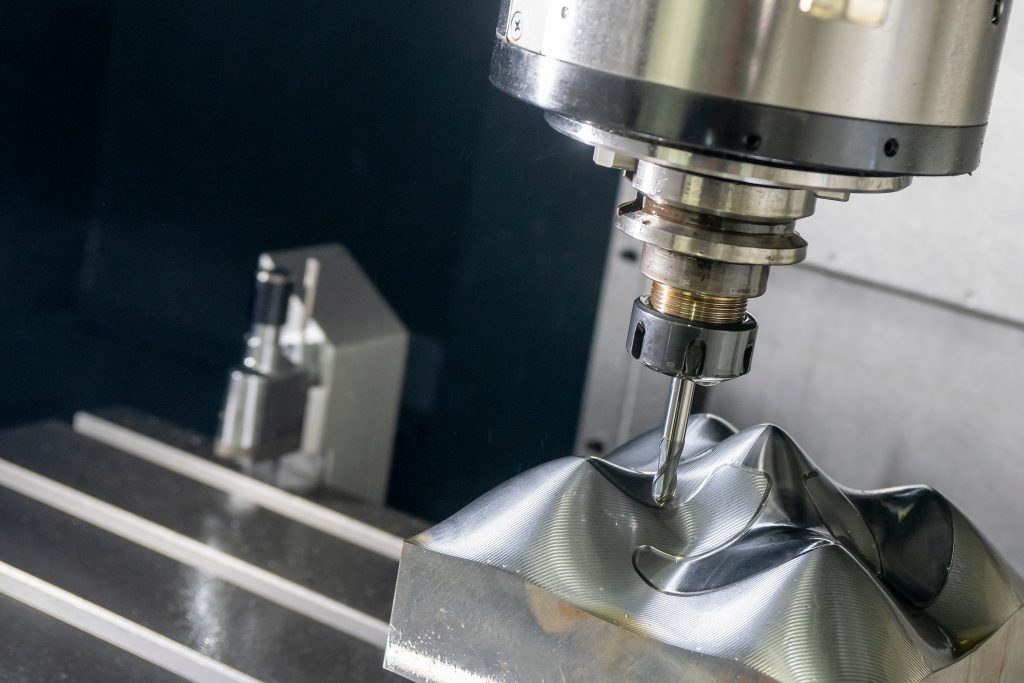
- Face Milling
Face milling is the process of machining a flat surface on a workpiece, typically using a flat end mill or a face mill.
- Thread Milling
Thread milling is commonly used for processing threaded surfaces, allowing you to use a treadmill to work on different threaded surfaces.
- Profile Milling
Profile milling is typically used for machining complex contour shapes. This technique involves using specialized milling cutters tailored to the required shape or contour. Both concave and convex cutters fall under the category of profile milling cutters.
- Sloting Milling
Slot milling is the process of creating slots on a workpiece, requiring specialized tools such as end mills and slotting cutters for the operation.
Materials for Milling Tools
- Carbon Tool Steel
Highly durable and with superior hardness, carbon tool steel is used for machining metal workpieces, commonly employed in contour machining, well-suited for a wide range of applications, and offered at a reasonable price.
- High-Speed Steel
High-speed steel offers high hardness, wear resistance, and can withstand high temperatures, making it suitable for rough and semi-precise machining. In comparison to other materials, it also comes at a lower cost.
- Carbide
Carbide is harder than high-speed steel and can be used to process both metal and non-metal materials. Due to its high hardness and wear resistance, it is often used for processing parts that require intricate operations, albeit at a higher cost.
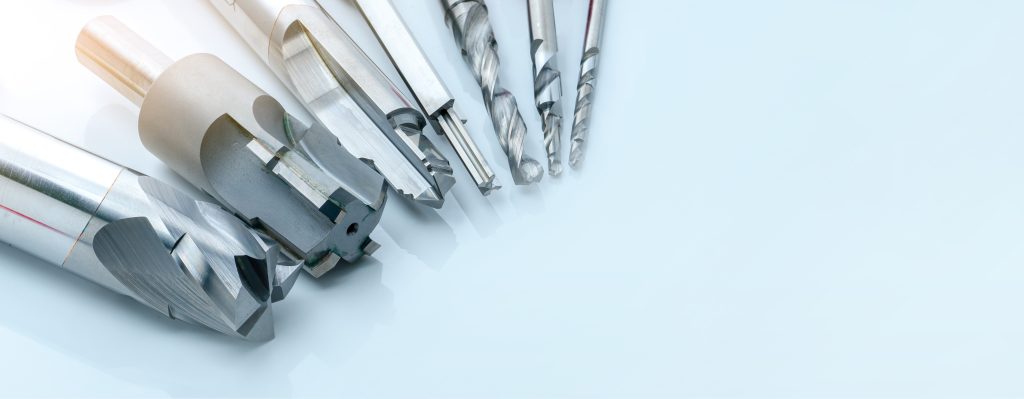
- Ceramic
Ceramics are not only wear-resistant and highly durable, but they also withstand high temperatures and corrosion. They can be used to process both metal and non-metal materials. However, ceramics are prone to brittleness, making them susceptible to damage, and they tend to be priced higher.
- Diamond
Diamond possesses extremely high hardness and wear resistance, commonly used for intricate and ultra-precise machining, though it comes with a high price tag.
- Cubic Boron Nitride
Boron nitride, second only to diamond in hardness, is typically used for machining super-hard materials and high-hardness workpieces. Its price is relatively high.
Milling Diameter
The diameter of milling cutters typically ranges from Φ16 to Φ630 millimeters. In general, the spindle diameter of the machine tool determines the diameter of the tool, so the tool diameter and spindle diameter should be aligned.During rough machining, it’s common to use large-diameter milling cutters. For finishing operations, smaller-diameter milling cutters are usually preferred. The depth of the milling also affects the size of the cutter; as the depth increases, so does the diameter. If the milling depth is high and the width is large, then larger-sized milling cutters should be selected.
Flute Count
The flute count of a milling cutter refers to the number of cutting edges. More cutting edges are suitable for high-speed rough machining, while fewer cutting edges are suitable for precision machining, especially for achieving smooth surfaces. Additionally, the more cutting edges there are, the larger the size of the milling cutter.
Milling Cutter Power
The harder the workpiece material, the greater the required cutting power, which consequently demands higher milling cutter power. Additionally, the size of the workpiece also affects the cutting speed. Cutting speed is inversely proportional to machine tool speed.
When selecting milling cutters, it’s important to consider not only the power range of the tool but also whether the maximum machine speed meets the minimum cutting speed requirements for the tool.
Number of Teeth
The number of teeth or cutting edges on a tool impacts cutting force and surface finish. For milling cutters of the same diameter, a fine-toothed cutter has more teeth than a coarse-toothed one. Coarse-toothed cutters generate greater cutting forces and are commonly used for rough machining. Fine-toothed cutters, with their higher number of teeth, distribute less load on each tooth, making them suitable for machining harder materials.
Milling Cutter Inserts
When selecting milling cutter inserts, it’s essential to consider not only the types of materials the insert can process but also its cost-effectiveness.Grinding blades and punching blades can both be used to process metal surfaces while ensuring accuracy.However, using grinding blades for rough machining is too costly and not cost-effective. Typically, for rough machining, punching blades are chosen instead, while grinding blades are used for finishing operations.
Tool Coating
The choice of tool coating varies depending on the tool material. Only by selecting the appropriate coating can you achieve the best performance,otherwise, it can damage the tool.
- Titanium Nitride Coating (TiN):
TiN is a universal coating that enhances tool hardness and can be applied to high-speed steel tools or forming tools.
- Titanium Carbo-Nitride Coating (TiCN):
TiCN coating is suitable for high-speed steel tools.
- Chromium Nitride Coating (CrN):
Due to its excellent anti-adhesive properties, CrN coating is suitable for high-speed steel tools, hard alloy tools, and forming tools.
- Nitrogen Aluminum Titanium or Titanium Aluminum Nitride Coating (TiAlN/AlTiN):
TiAlN/AlTiN coating is suitable for cutting tools used in processing hard alloys, and it features high-temperature resistance.
- Diamond-Like Carbon Coating (DLC):
DLC coating has low friction and high wear resistance, making it suitable for high-speed machining of hard alloys and high-speed steel cutting tools.
Price
There are many factors that influence the price of cutting tools.
- Type: Face milling cutters are more expensive than end mills.
- Material: Some materials are more special and thus expensive. For example, ceramic cutters are more expensive than tungsten steel cutters.
- Size: Generally, larger cutting tools are more expensive, while smaller ones are cheaper.
- Brand: Well-known brands are more expensive than emerging ones.
- Coating: Different types of coatings come with different prices.
Milling Tool Quantity:
Deciding on the quantity of milling tools requires consideration of many factors.Before machining, the production plan is determined first. Based on this plan, the quantity of tools is then decided.If you are producing a large quantity of parts and the tools are running for extended periods, there will be wear and tear. You need to prepare extra tools for replacement.For complex and high-hardness parts, tools are prone to damage, so you need to prepare a variety of types and quantities of tools to ensure smooth operations.Additionally, the manufacturing environment for tools is also crucial. When properly lubricated, tools can achieve faster cutting speeds, are less prone to damage, and their lifespan is prolonged.
Quality:
When selecting milling tools, it’s best to go for well-known brands. These brands have stood the test of time, come with great reputations, and offer a certain level of quality assurance. They are worth relying on.Moreover, milling tools should have safety certifications and all the relevant credentials. High-quality cutting tools mean shorter downtime, higher machining precision, and minimal tool wear.
After-sale Service:
When choosing a supplier, it’s important to know if they provide comprehensive technical support, training, customization, and after-sales service. Opting for a reliable supplier can save you a lot of trouble and preserve your time and energy.
Conclusion
That’s all about milling tools. If you want to learn more about milling tools and related knowledge, please contact us. We’re looking forward to communicating and collaborating with you. Thank you for reading!


